What are phobias? The dictionary defines phobias as “An extreme or irrational fear of or aversion to something”.
According to the National Institute of Mental Health (NIMH), over 9.1% of Americans suffered from a specific phobia this past year (probably more with Covid factored in). Some phobias crop up during anxiety or panic attacks. Other phobias appear as a result of an incident.
Phobias fit under the umbrella term Generalized Anxiety. Let’s talk about them and what we can do about them the holistic way.
Hello and welcome to Fearlessly Holistic
My name is Irma and I want to share my journey to improved health by eating whole foods, moving my body and eliminating stress as much as possible.
It is my hope to inspire you to make daily changes.
Why? Because eating fresh, seasonal food and getting some sunshine is the best way to increase longevity. But you do not want just a long life.
You want a quality long life.
My blog posts are my opinion and the results of things that I have tried that either worked for me or didn’t. My opinions are for informational purposes only and are not intended as medical advice. Medical advice should always be obtained from a qualified medical professional for any health conditions or symptoms associated with them. As well, there may be affiliate links in this post. Read more here.
*NOTE* If you are having problems and think that you may harm yourself or others please call 911 and ask to be directed to a mental health professional. Over-the-phone, online, and email counseling options are available to most people.
Causes of Mental Health Disorders
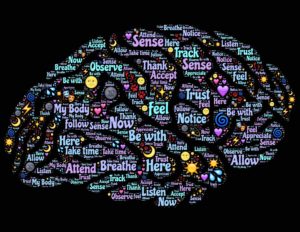
Our brain is an amazing representation of creation. On one hand, it is a lump of “grey matter” that can multi-task on auto-pilot.
On the other hand, a brain can malfunction in a way that can result in single or multiple representations of mental health problems in a person.
Many researchers believe that mental health disorders are products of several contributing factors.
An example might be a curious dog that barks at you while you play in a park. Suddenly the park is now a scary place!
It would have been easier to identify each disorder if there is only one cause to all mental health disorders but that is not how it is.
In reality, all mental disorders could root from several causes such as environment, individual genetic make-up that programs the brain, or a combination.
There are actually at least 3 main contributing factors that could be potential causes.
1. Physical causes.
This is biological in nature.
Each individual has a distinct and unique biological make-up that dictates the direction of his health, physical or mental.
Some people are born to develop a specific mental disorder, while other people are less prone to risks. I am not sure that I believe a person can be ‘born with’ mental illness, unless something happened in the womb, like substance abuse.
This cause also covers the genetic make-up of an individual, the biological make-up and the events in life that affects the physical body (such as a head trauma or substance abuse).
2. Environmental or social causes.
Nature VS Nurture? Research confirms that a person experiences a split-half of both.
- Nature is the physical attributes of an individual.
- Nurture reflects more on the social structures and physical, emotional and mental environments people are exposed to.
This is more on how an individual grew up, the interaction of influences that affected all facets of his growth and the mechanisms he used to cope with a specific environment.
It is observable that some mental disorders are caused primarily by the consequences of experience brought about by the environment.
For example, people (especially children) living in a stressful, chaotic and unstable environment are more likely to develop mental illnesses than those individuals living in peaceful environment.
This consequence is due to the fact that there are certain social and environmental components that may become risk factors to the development of mental health problems.
Personally, I believe that if your parents aren’t good at problem-solving or coping with bad times, they cannot teach their children how to either.
3. Psychological factors.
This particular factor tells us more on:
- The psychological state of a person
- Their coping mechanisms to certain life events that could otherwise end up with psychological disorders,
- And their perception on his own self and his environment and thought patterns that affect his mental health.
For example, someone who has gone beyond the limit of his stress coping capacity is likely to break down mentally as a result of the psyche’s automatic “lock down” to protect itself.
That is how I ended up with depression, anxiety, and panic disorder; the grand trifecta of mental health issues.
For the majority of people lacking mental health, it is often the case of triggering the mental health to break down through series factors.
These factors eventually contribute to the cause of mental health disorder.
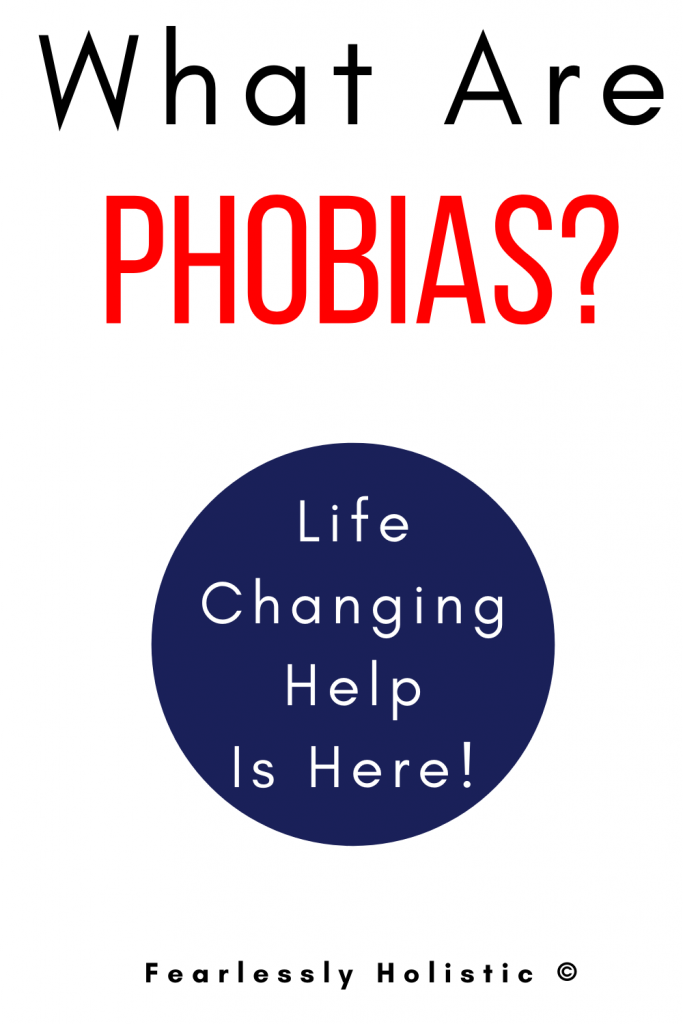
Generalized Anxiety Is Not Being A Worrywart
Everybody worries from time to time, but if your worrying interrupts your daily life and causes debilitating anxiety, you may have Generalized Anxiety Disorder, or GAD.
GAD can be the starting point for other mental health issues, including phobias. See this article from Psychiatry.org.
Related Post: How To Stop Social Anxiety
While people with GAD may start out by worrying about simple things, this disorder can easily take over a person’s life and cause other medical problems.
If you think that you have GAD, you should see your doctor immediately and talk about your various treatment options.
People with GAD worry about normal things like money, healthy, relationships, and jobs.
It is normal to worry about these things, even on a daily basis.
However, if you have GAD, you will find that this worry is constant and excessive—and in many cases, irrational.
People who are diagnosed with GAD are often so distracted and consumed with worry that it is impossible to think about or do anything else.
From the moment a patient awakes to the moment he or she falls asleep, worry is a part of life.
Often times, the worry has no foundation.
Medical professionals do not yet know what causes GAD, so treatment and diagnosis can sometimes be difficult. But there is plenty of speculation. Read this article from NCBI.
There are a number of symptoms stemming from GAD which include:
- Nausea
- Difficulty breathing
- Muscle tension
- Headache
- Restlessness
- Fatigue
- Sleeping problems
- A change in appetite
- Sweating or hot flashes
If you are experiencing some of these symptoms and find yourself worrying often, you should ask your doctor if you have GAD.
Treatment for GAD begins with ruling out other anxiety disorders.
Therefore, it is crucial for you to be very specific about your symptoms.
Treatment that works well can than include both therapy and medication.
Every person worries in a different way, so every person needs different treatment as well.
You should work together with your doctor to find the best form of medical treatment for your specific GAD situations. Work with your own body’s wants and needs.
No matter why you’ve developed GAD, there is help.
Most people suffering from GAD do not know that there can be help.
If you are constantly consumed with worry, talk to your doctor immediately to find out how medical treatment can help you.
From having enough money to pay for bills to getting that job promotion, you may feel as though there is always something to worry about.
In a normal life, you may think about these things once or twice a day, and a doctor can help you achieve this, even if you have GAD
Phobias and Fears – What’s The Difference?
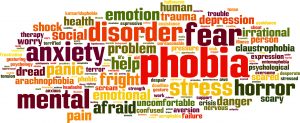 The definition of fear is “to be afraid of something or someone dangerous, that is likely to cause a threat”. It is a normal reaction to an actual threat.
The definition of fear is “to be afraid of something or someone dangerous, that is likely to cause a threat”. It is a normal reaction to an actual threat.
The dictionary defines phobias as “An extreme or irrational fear of or aversion to something”. In this case the threat is unknown, or potentially in the future, or otherwise not happening currently in real life.
Phobias are excessive fears that are out of proportion to any actual danger.
See this brief video on the basic difference between phobias and fears:
The phobia can cause other anxiety reactions, like avoidance, and can become debilitating to that person. As fears pile on top of the phobia, the person can become agoraphobic (fear of leaving their safe space) in order to avoid anything that can trigger the phobia.
There are people with excessive fears, but they can continue working and living life without too much interruption.
Phobias are based on a specific fear, like a fear of dogs.
This may have developed from a specific incident involving a dog.
An example could be a small child that has a strange, large dog jump on them. It may have surprised them, or growled, or otherwise acted aggressively. Or it just seemed aggressive.
Those actions from the dog may build up in the mind of the child until it becomes a phobia and then all dogs must be avoided.
I say strange dog because I know people who were raised with large dogs as pets and are afraid of other people’s dogs – large or not.
Some phobias are specific off-shoots of other mental illnesses, like anxiety.
Agoraphobia (fear of leaving one’s home) and claustrophobia (fear of being in enclosed spaces) are both symptoms of anxiety issues.
Specific phobias go beyond being simply adverse to a certain object or situation and can actually cause panic attacks.
Types of Phobias
These fears vary greatly from person to person and usually stem from experiences in childhood. Some common phobias are:
- Agoraphobia – fear of leaving one’s home
- Social phobia – fear of being judged, evaluated, and rejected by other people.
- Acrophobia – fear of heights
- Aerophobia – fear of flying
- Mysophobia – fear of germs
- Cynophobia – fear of dogs
- Arachnaphobia – fear of spiders
For a full list of phobias, click here to go to Wikipedia.
Fears vary widely, but fall into five categories:
- Animals – dogs, spiders, snakes, insects
- Natural environments – water, thunder, lightning
- Blood/Injury – Dentist, Doctor, getting injections
- Situational – claustrophobia, agoraphobia
- Other – Loud sounds (children are prone to this), choking, vomiting
How Do You Get Phobias?
Specific phobias can be difficult to diagnose in comparison to rational fears.
There are six main criteria points that doctors use to diagnose specific phobias:
1. The fear must be persistent and unfading.
In some people, this fear may also be felt even if the object is not around or the situation is not happening, simple because it might be around or might happen in the future.
2. It must cause acute anxiety.
It may even lead to a panic attack, when the object is around or the person is in the situations.
3. The fear itself is irrational and excessive, because there is no immediate danger.
The person with a phobia may not recognize that the fear is irrational, because it is terrifying them.
4. Avoidance of the fear causes disruption in normal, daily activities.
People will do anything to avoid the fear, like not going to work, school, or social events.
5. The fear disrupts life to the point where more time is spent worrying about the fear than living life.
This can cause job or relationship loss.
6. These symptoms are not attributed to another anxiety condition or disorder.
In many cases, treatment is not necessary.If you can work and get on with most of your day, you may not seek treatment.
For example, if you have a fear of airplanes, you can simply choose not to fly during your life.
However, once the phobia begins to disrupt your functioning on a daily basis, you should see your doctor for treatment.
Cognitive Behavioral Therapy (CBT) is usually the best treatment you can get for a specific phobia.
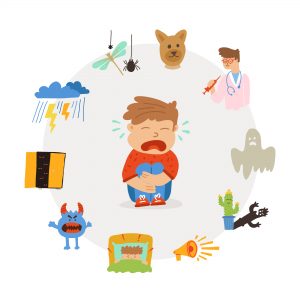
With this process, the person is exposed to the object or situation, slowly at first, and with pictures or visualization. This is called desensitization or exposure therapy.
As you slowly learn and are exposed more to your fear, you build up resistance to the fear.
And as you remove the blocks that are holding you back, you also learn coping skills for other areas of life.
You may also attend group CBT sessions and learn coping skills with others who have the same phobia. This can be comforting for some.
Virtual reality is also great for helping others to overcome specific phobias.
It is simply important to seek help if a specific phobia is ruining your life.
You can ask your doctor for tips to help you overcome a panic attack or ways in which to avoid objects or situations in healthy ways.
Related Post: Is Panic Disorder Curable?
Agoraphobia Self-Help
Under the umbrella of anxiety disorders fall the category of phobias, which as intense and irrational fears that lead to panic.
Agoraphobia is one such fear a person could have, and it is the most commonly treated phobia in the mental health world. I had it, but did not realize what it was.
It may not be the most common, but its symptoms are severe enough that treatment is almost always necessary.
Agoraphobia is the fear of leaving one’s home or safe area and venturing into the outside world.
It is also found in combination with other phobias or obsessive-compulsive disorder.
People suffering from agoraphobia usually have panic attacks when they feel unsafe.
These unsafe feelings include when the person is trapped, out of control, or too far from a personal comfort zone.
Many people suffering from agoraphobia are confined to their homes or even to a specific room in their home.
For me, I could leave my home, but did so rarely.
- Shopping was done basically at my local gas station, so I could avoid groups of people.
- I avoided going to the community mailbox because I couldn’t deal with opening mail and possibly having to respond to it.
- My curtains stayed closed and I screened all phone calls.
There are many misconceptions surrounding people with agoraphobia.
First of all, agoraphobia is not a fear of open spaces, nor is it a fear of crowded spaces. While these conditions may exist within a person as well, agoraphobia is specifically a fear of being too far from a normal area, regardless of the crowd.
Many people welcome visitors into their home, even if they themselves do not leave.
Agoraphobics usually simply need to be in complete control of a situation.

- Agoraphobia can affect any person, regardless of gender, age, religion, race, ethnicity, or economic status.
- The disorder is about twice as common among women than among men, however.
The conditions usually begins with generalized panic attacks or slight phobias, and develops into a more and more serious condition.
I did not have panic then, but I did have a severe depression.
As I tried to upgrade my position at work and I was stonewalled at every turn. This led to a growing dissatisfaction at work, so when there was a death in my family I pretty much withdrew from life.
My grief and sadness were deep, so I went to my doctor to see if he could recommend something. He gave me a note for work and a second prescription for anti-depressants. Sigh.
When I took my note to work, a co-worker told me about a mental health program called:
Bounce Back
It is local to where I live (Canada). It is a form of CBT and is very helpful if you can’t get to a group program in person.
Positive Psychology has similar information. National Alliance on Mental Health (NAMH) has self-help information as well.
Bounce Back has different booklets for different mental health issues, like getting out to shop or dealing with people.
The booklets are designed to help you take baby steps towards fixing one issue at a time. You get one or two booklets to work on at a time and you have to talk to a coach to move on to the next booklets.
You will work through each issue that is holding you back.
It is an excellent program because it teaches skill building. Prescription drugs may numb the pain, but skills can be used in multiple areas of life.
I did the Bounce Back program before I moved, and again after I moved. Because Moving piled on more stress. Duh! What was I thinking? I wasn’t.
A number of famous people have suffered from agoraphobia in the past, including celebrity chef Paula Dean, actress Kim Basinger, director Woody Allen, and Nobel laureate for literature Elfriede Jelinek.
The key here, however, is to realize that there is hope. If you suffer from agoraphobia, ask for help and you can begin the healing process.
Claustrophobia
Claustrophobia is almost an opposite to agoraphobia. With agoraphobia, I trapped myself inside.
With claustrophobia, I had to be outside. #weirdbrain
My claustrophobia was entangled with my panic disorder. When I finished weaning myself off my depression medication, I developed panic and claustrophobia.
I 100% believe my mental health issues stemmed from being in the wrong job, but staying because I had to.
Claustrophobia is an anxiety disorder, and as such, it shares many symptoms with other anxiety disorders:
- Sweating or chills
- Dry mouth
- A feeling of choking
- Hyperventilation
- Accelerated heart rate (tachycardia)
- Dizziness, fainting, lightheadedness
- Confusion or disorientation
When I got my panic disorder under control (read my post here), my claustrophobia was gone as well. win-win.
Claustrophobia is usually treated with Cognitive Behavioural Therapy (CBT) (recommended).
Taking Control of Mental Illness
We are told that mental illnesses occur because of our genes, our upbringing, our personality, our temperament, our lifestyle and we can do nothing about them.
Stress or no stress, we are told, if we have all these factors loaded in our personal history, we are prone to have a mental illness.
Some psychiatrists adhere to this belief strongly. This belief is then put across as the “gospel truth” of science.
Naturally, this brings up a sense of low self-esteem and helplessness in the person who is suffering with the illness.
We are then made to believe that medications are man-made answers to mental illness, which is a curse of nature.
The whole area of mental illness is about losing a sense of freedom.

When we find ourselves bound to emotional issues of our life, that we cannot rid ourselves of, we lose our freedom of thinking:
- This creates stress in our mind and our body bears the brunt of it.
- This loss of freedom brings up a sense of fear or a sense of helplessness.
- Both such feelings bring up a sense of insecurity.
- People lose confidence in their own worth.
- Self-esteem becomes low.
- With lack of confidence and low self-esteem, comes poor decision-making.
A person suffers with all these conditions when suffering with a mental illness.
When a mentally ill person goes to seek help – confidence, self-esteem and sense of freedom are already lost.
Instead of helping the person become independent, there is a tendency to make the person dependent on medication.
Medication plays its role in controlling the condition or state of illness.
It does nothing to improve the quality of life permanently.
To improve their quality of life, the person needs to take responsibility for their own well being.
We live in a free society. The freedom to suffer is also one kind of freedom.
We also have the freedom to look for answers to minimize our suffering
Treating Anxiety Effectively Without A Prescription
Anxiety disorders affect millions of people across the country and include disorders like social phobia, specific phobias, obsessive-compulsive disorder, and generalized anxiety disorder.
However, these disorders do not need to rule your life.
If you think that you are suffering from an anxiety disorder, it is important to see you doctor right away. Treatment can truly change your life. A correct diagnosis will help you get the best care, and does not necessarily require prescription medication.
There are then a number of ‘non-drug’ treatment options you can use to help you overcome your anxiety disorders.
1. Talk therapy, also known as psychotherapy.
This allows you to tell your problems to a psychiatrist who actually cares about you and wants to help you. There are a number of different talk therapies you can use. FYI: Be aware that this type of help usually requires medication.
2. Cognitive behavior therapy
Learn how to replace old behavior with new behavior, slowly with steps. This is often great for phobias.
3. Psychodynamic therapy
A professional will help you to look at the underlying causes of your condition so that you can understand how to better control your life.
4. Meditation
Learning how to shut off the noise in your head is a good skill to have. Try a relaxing YouTube meditation video from Goodful:
5. Yoga is great if you experience panic attacks
Yoga teaches you how to strengthen your muscles and how to breathe, which is key to relaxing.
This post from YogaRove contains multiple videos on using Yoga for various issues.
6. Acupuncture and acupressure to deal with your physical problems
This is helpful if your anxiety is related to an injury or physical pain
7. Hypnosis
Your doctor can recommend to you these treatments and give you more information on what will work best for you.
I recommend Steve G. Jones. I have several of Steve’s guided hypnosis tracks; I like his relaxing voice. Sign up for his newsletter to get periodic sales of his products.
8. Journaling
I’m adding this to the list because I believe in the power of getting unhelpful thoughts out of my brain and on to paper. It’s surprisingly freeing.
Dump your mental crap before it becomes a problem. I did not believe in this until I started actively writing out my thoughts.
8 Unusual Phobias
Fear of heights, fear of illness, and the fear of death—these are all relatively normal fears that many people either have or encounter at least once in their life.
But the following eight phobias are very real to the people who have them. Do you know anyone with:
Coulrophobia
The fear of clowns is actually relatively common, especially in children.
Popular culture confirms its widespread nature with characters like the Joker in the Batman series, or Pennywise the Clown in Steven King’s It.
Hylophobia

Are you afraid of trees or the woods? We can’t blame you, considering the fact that many fairy tales and movies depict some pretty creepy things happening there.
If you’ve got it really bad, you can always move to the desert.
Nomophobia
This is the fear of going without cell phone coverage.
This one might actually be pretty reasonable, considering how much we rely on our phones…especially when you’re using a GPS.
Papaphobia
If you fear the religious leader of the Catholic world, you have papaphobia. That fear is related to its more common cousin heirophobia—the fear of religious or sacred things—and hagiophobia—the fear of saints or holy people.
Pogonophobia
If you have an irrational fear of facial hair, you’ve got pogonophobia.
Taphobia
The fear of being buried alive is actually not so ridiculous—at least, it wasn’t in the past.
During peaks of plague in the 18th century, some sick people were buried alive. It happened so frequently that bodies were interred with a string that connected their finger to a bell, in case they woke up; ever heard the expression “a dead ringer?”
Triskaidekaphobia
If you fear the number thirteen, you’ve got this fear…and perhaps architects do as well, because (as you might notice) it’s hard to find a thirteenth floor in any building…although I suppose that could make the fourteenth floor an anxiety-producing alternative.
Trypophobia
One wonders if this fear of many irregularly-spaced holes takes its name from the honeycombed interior lining of a cow’s stomach (tripe).
Either way, if the idea of holes grosses you out, you have it.
Conclusion
Many anxieties and phobias stem from stress.
The stress could be a barking dog that scares a child, an incident of choking that brings on a new phobia, or surviving a traumatic situation and having PTSD.
Learning coping skills that can be used in multiple situations is key to managing stress as it comes at you.
If everyone can teach their kids good coping skills, we can eliminate much of the depression and anxiety in North America in a generation or two.
That will be amazing!
Holism targets overall wellness, and when we are well, we only get better with age.
Please share this post with anyone who can benefit from it. Sharing is caring!
And follow me on Pinterest!
Until next time, here’s to our health!
-Irma
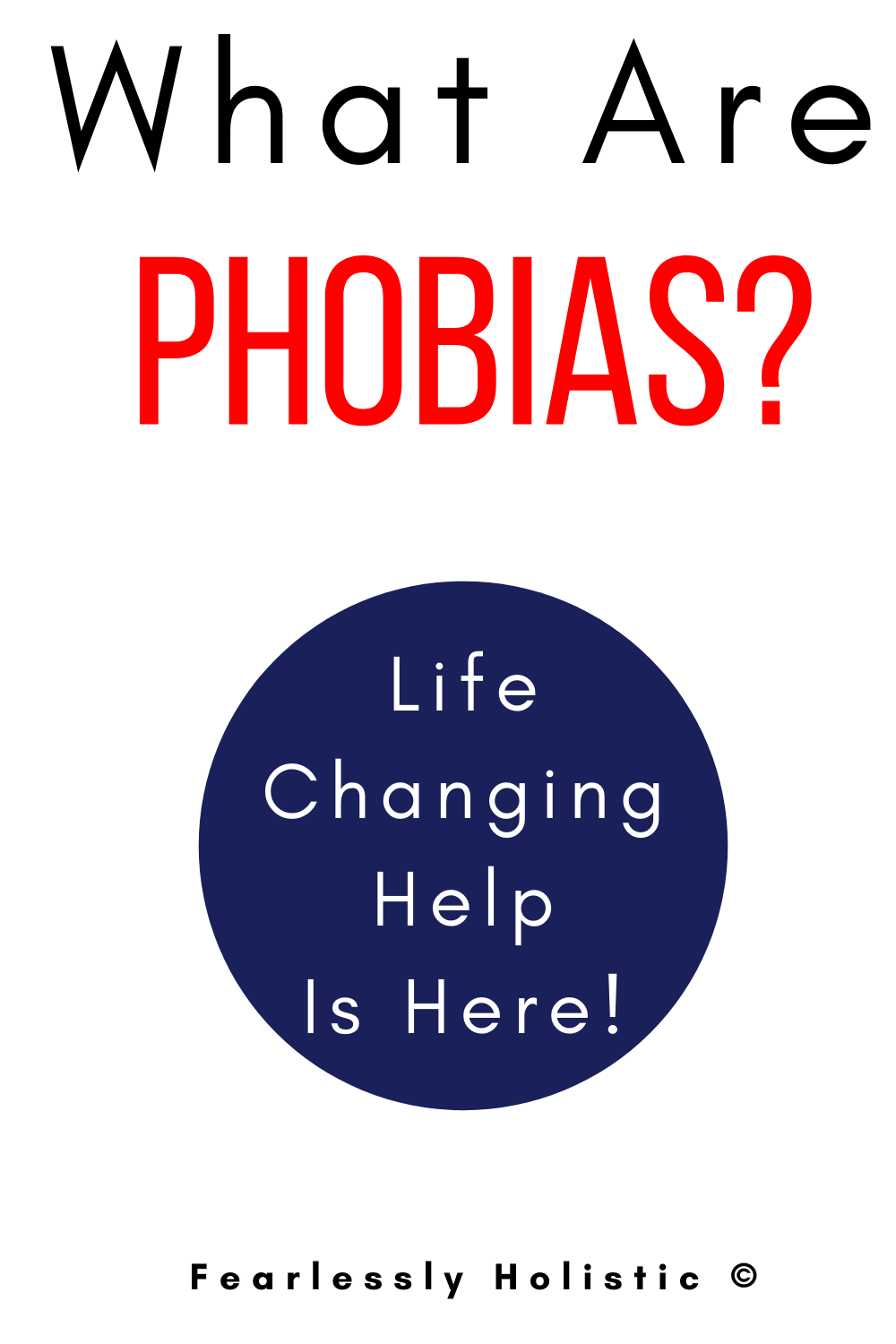
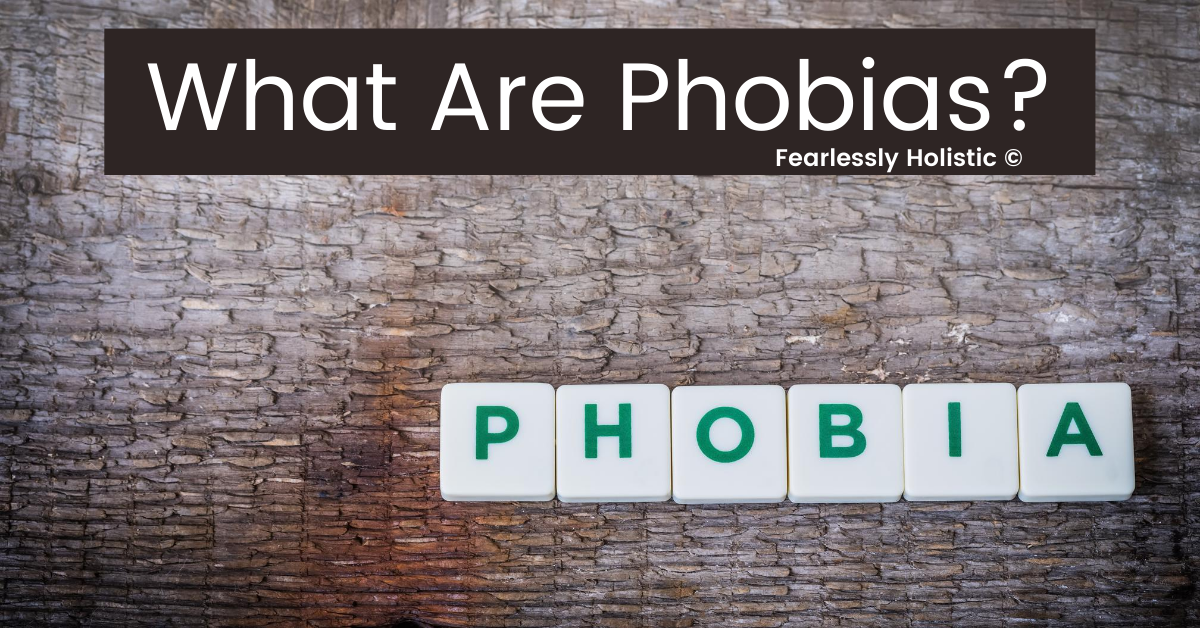
Appreciate this post. Let me try it out.